Much of the time that I have spent as a percussionist, even dating back to high school days in the 1960s, has been devoted to problem solving – not “how do I play that?” but rather, “how do I make it easier to play that?” Addressing this problem has often required more than simply practicing harder. It frequently has meant lots of thought in preparation; “what’s a better way to set up the instruments?” “are all of the instruments supported properly to get the best sound?” “how can page turns be eliminated?” “what are the best sticks or mallets to use?” “is there a better instrument to get the sound I want?”
This question about getting the right instrument has occupied a good part of my professional life, and it has on many occasions meant that in order to get the instrument I wanted, I would have to build it myself because it didn’t already exist so it couldn’t be purchased.
Tubophone
One early example occurred in the 1970s, while I was still a rookie Principal Percussionist in the Rochester Philharmonic Orchestra. For one pops concert, the guest conductor was Arthur Fiedler, and on the program was the “Dance of the Rose Maidens” from “Gayne Ballet” by Aram Khachaturian. I had always practiced this excerpt on the xylophone (as indicated in the Goldenberg book), so it came as a bit of a surprise when I looked at the publisher’s part a few weeks in advance of Fiedler’s visit, and noticed that the part was actually scored for a chromatic tubophone having a written range of a ninth (E1 to F#2).
Using the instrument indicated by the composer, and avoiding substitute instruments has always been a priority for me. (However, one exception is that I have also been open to getting a desirable sound, even if that would require tweaking the instrument in some way.) There were no commercial tubophones on the market at that time, so I decided to make one. I went to the hardware store and purchased several yards of galvanized electrical conduit tubes along with some lumber for a frame, and I built a 2-octave chromatic tubophone. The tuning of each pitched tube was done by ear, using the trial-and-error technique. I started with the longest tube thinking that in the event it might be cut too short, it could still be reused for the next higher chromatic pitch.
Along came the first rehearsal, and I played the part on my home made tubophone. At the intermission of the rehearsal, Fiedler came running back into the percussion section to inquire about the unusual sound; he wasn’t used to hearing the toy-like tubophone sound, and he was quite surprised when he looked at the part which clearly called for a tubophone. He walked back to the podium checked his score, and smiled back at me. He never said another word to me about it, and I’ve always thought the sound of my tubophone is perfect for that excerpt.
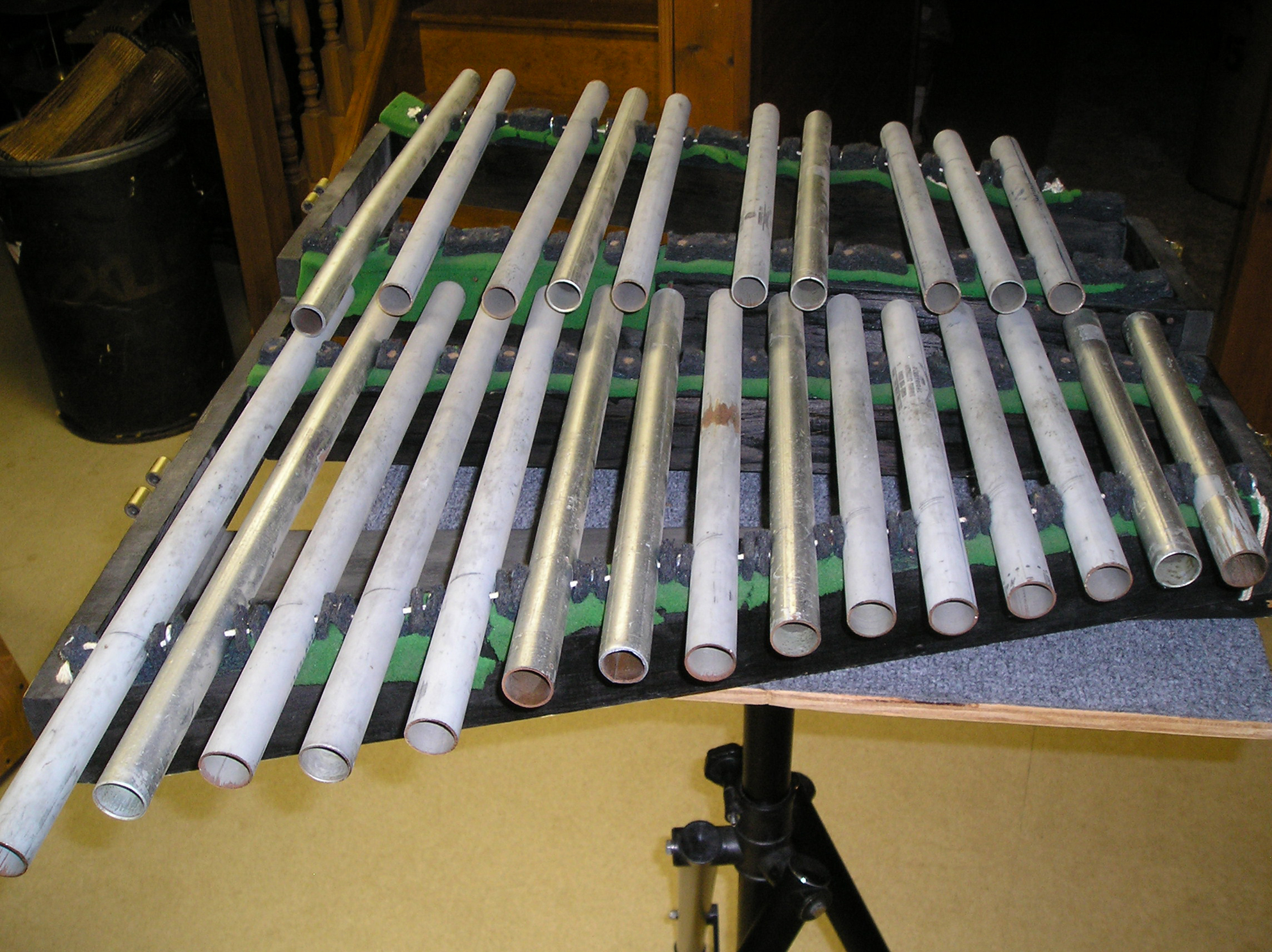
Field Drum
At the same time (early 1970s) I became interested in making a “Tambour Militaire” that suited my taste in sound. I have always preferred a snare drum sound with an element of head ring to it – in contrast to today’s ubiquitous preference for a “dry” snare sound, perhaps influenced by the highly intricate snare drumming that has evolved in drum corps music. It’s a subjective thing, but the sound I like is about 75% snare sound and 25% head ring, because my sense is that the head ring helps a snare drum to blend better into a large ensemble sound. I also noticed that my Walter Light timpani had “floating” heads – the rims of the heads extended out about an inch or so beyond the bowl.
Using these timpani as a conceptual model, I thought it would be interesting to have a Tambour Militaire with floating heads, so I decided to make one. I used a 14-inch diameter brass shell from an old rope Scottish Pipe Band field drum. Then I used 16-inch counter hoops, and extended the double-lugs away from the shell using 1-inch lengths of firm nylon tubing. In order for the gut snares to lay properly on the bottom head, a number of individual slots were cut into opposite sides of the bottom counter hoop. Finally, calfskin heads were tucked onto flesh hoops and set on the drum.
I was very pleased with the drum’s sound, but the best was yet to come. It just so happened that the Philadelphia Orchestra was on tour and scheduled to perform in the Eastman Theatre. I was born and raised in Philadelphia, and I had not only heard many live Philadelphia Orchestra concerts, but I had also studied with the timpanist, Dan Hinger and percussionist, Alan Abel. I met them backstage before their concert, and I offered to show my newly made Tambour Militaire to them. Mickey Bookspan, a wonderful snare drummer in the orchestra overheard my offer and he too became interested. When they heard the drum, Mickey offered to play it on the concert in William Schuman’s “New England Triptych.” The final movement, “Chester,” has a big part for a military drum.
The performance that night had me on the edge of my chair, and I could hardly contain myself as the audience came to its feet at the end of the “Chester.” In my inner being I was jumping up and down shouting to myself “that was my drum!”
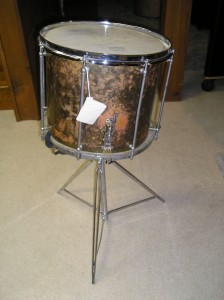
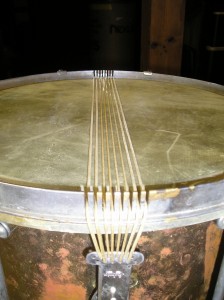
Wood/Metal Castanet Machine
One problem that surfaced soon after I joined the Rochester Philharmonic occurred in the “Bacchanale” from “Samson and Delila” by Camille Saint-Saens. The score calls for castanets of wood (Fr: “bois”) and metal (“fer”). We had a “core orchestra” structure, meaning that for many weeks of the season, we performed with essentially a classical-size orchestra – only pairs of winds. Whenever there was a large percussion section required, we had to make-do as much as possible with just two percussionists (Ruth and me), and if we were lucky, with one extra player (usually John McNeill). This frequently presented a range of problems in combining parts and making them work. The thought occurred to me that it would be very helpful for both the wood and metal castanet parts in he “Bacchanale” to be played by one player. So I made a castanet machine that would accomplish this. It worked very well through performances over many years.
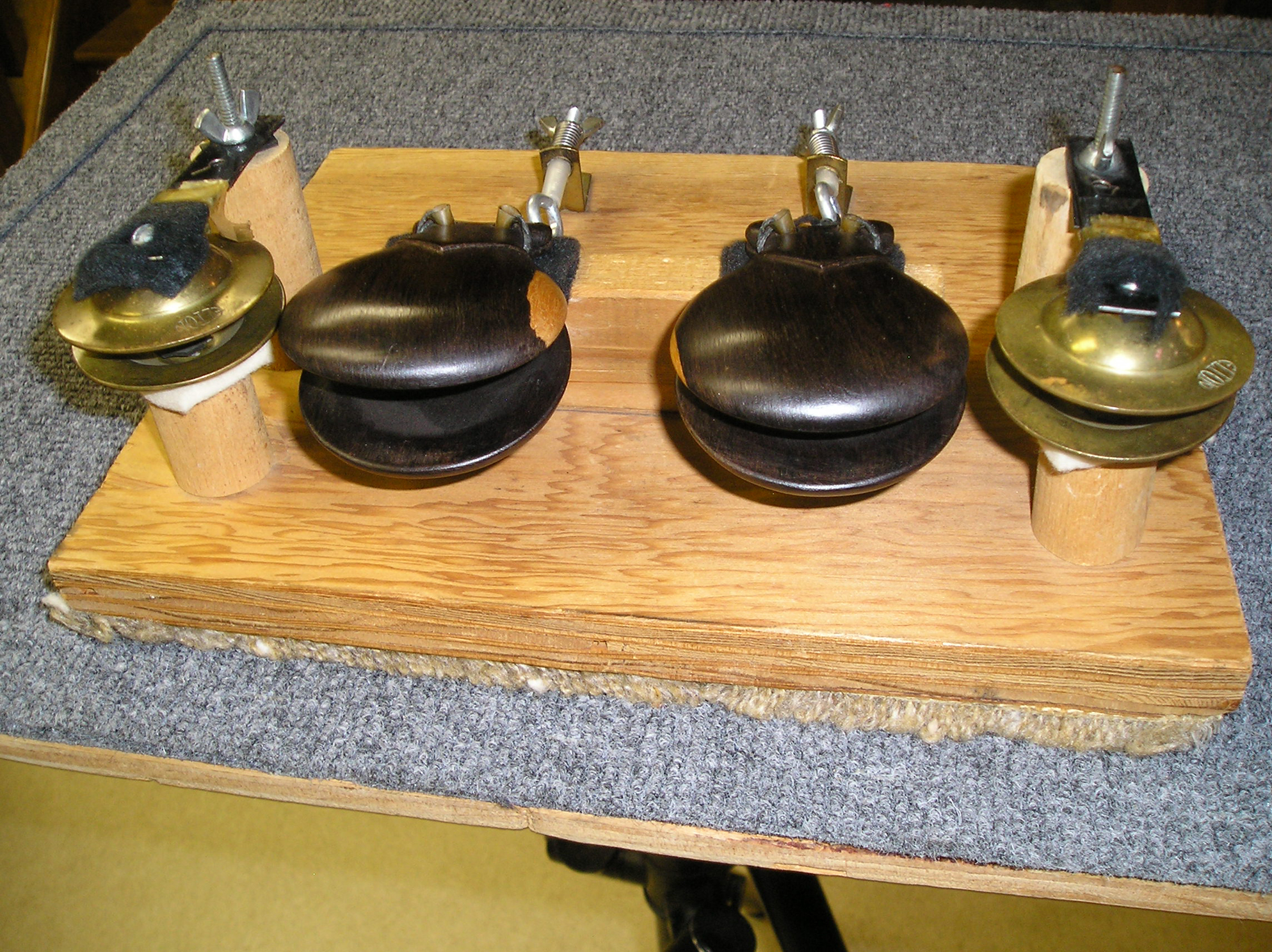
Tunable Bass Drum
The longer I played in the Philharmonic, the more I became aware of the subtleties of sounds produced by all of the standard orchestral percussion instruments, including the presence of pitch – especially in triangles (C-nat. in Wagner’s “Die Meistersinger Overture”), cymbals (Debussy’s “La Mer”), claves (Copland’s “Appalachian Spring”), and bass drum (A-nat. in the solos in Mahler’s “Symphony No.3”). Increasingly over time, I began to look for instruments to be used in selected passages based on their pitch.
One major orchestral instrument that seemed to me to be significantly under-appreciated was the bass drum. I wondered what it would be like if the bass drum could be pitched, in order to reinforce the tonality of many passages in the orchestra repertoire. In 1976 this question opened the door into a 2-year-long project to make such an instrument.
In past performances with the Paul Winter Consort, I had come to appreciate the full-toned sound of Brazilian surdos – metal-shell drums that had shell depths larger than the head diameter. I imagined a bass drum designed for adjustable pitch and full tone – combining the qualities of timpani and surdos. I decided to build one, and I started with getting a stainless steel shell, to provide tone support. I wanted a shell size of 30-inches in diameter and 32-inches in depth, but I discovered that a flanged steel shell could only be rolled to a maximum depth of 16-inches, so I ordered two shells. When they arrived, I took them to a local metal shop and had them welded together to achieve the 32-inch depth.
The most difficult problem was ordering a tuning device. I had to contact Mr. Anheier in East Germany – which was then behind the ‘iron curtain’ – to purchase his timpani tuning cable system, and after several months of back-and-forth communications, it arrived. The system for a 30-inch diameter shell had seven stations around the shell circumference. Seven holes, equally spaced around the shell, had to be drilled through the stainless steel to accommodate the lugs. Each hole took about an hour to drill with my electric hand drill.
The next step with the lugs attached was to determine the diameter of the counter-hoops. Two counter hoops were then ordered from a metal shop in Buffalo, NY. When these arrived in a few weeks another measurement was made for the flesh-hoops on which the calfskin heads would be tucked, and an order was placed for two flesh-hoops and two un-tucked calfskin bass drum heads.
At the same time a double-hoop bass drum cradle was designed. I then contacted Alan Abel to see if he could have such a cradle manufactured. He could and he did.
Finally, in 1978 as NEXUS gave the world premiere performance of John Wyre’s “Connexus” with the Toronto Symphony, the tunable bass drum made its debut. It has subsequently been used in the Tchaikovsky “Symphony No. 4” (F-nat.), Verdi “Requiem” (G-nat), Mahler “Symphony No. 3” (A-nat.), Stravinsky “Le Sacre du Printemps” (various pitches), and lots more.
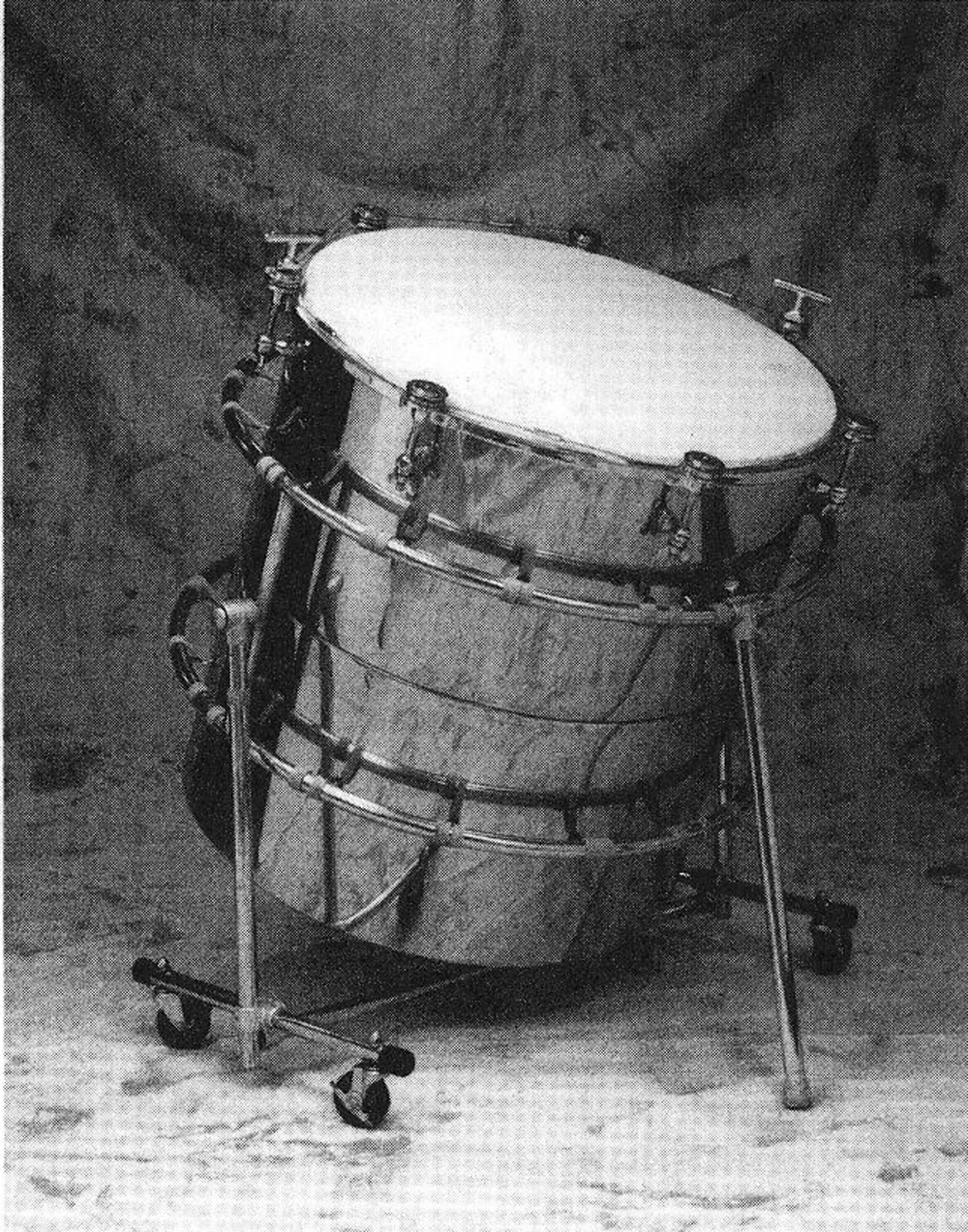
Theater Ratchet
In the 1980s, I had the desire to present an entire orchestral family concert with the Rochester Philharmonic. The program was called “The Story of Percussion in the Orchestra” and its was eventually performed by NEXUS with a number of orchestras, as well as recorded on our own “Nexus” CD label.
One of the pieces in the program is an excerpt from Beethoven’s “Wellington’s Victory” which is also sometimes called, “Battle Symphony.” One movement in the piece, the “March,” requires the sound of musket fire, which can be done acoustically by using a large theater-ratchet. However, once again, no such item existed in any catalog of instruments, and it would have to be built from scratch.
Two such ratchets were constructed – one for the French side and one for the English side – and both worked extremely well for the purpose.
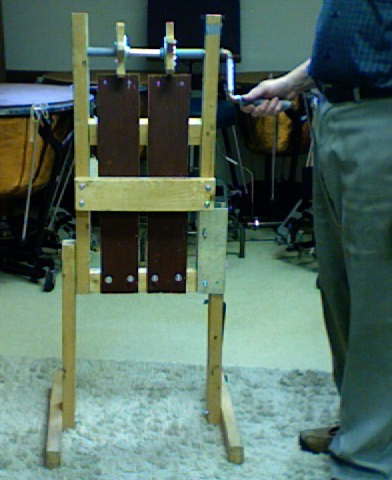
Tambourine Cradle
As with the bass drum, castanets and triangle (and other small percussion instruments) I never had any lessons devoted to playing techniques for these instruments. This was (and in some cases, still is) very typical, even after receiving a degree from a music conservatory. The acquisition of performing skills on these instruments has mostly been left to individual observation of other performers and “lateral-learning” – ideas shared from student to student.
One tambourine playing technique that I have never been fond of, is lifting one leg onto a chair and laying the tambourine on the lap to play with fingers, or to alternate strokes between the fist and the knee of the leg on the chair. First of all this requires that a chair be introduced into the setup. Secondly, it requires that the player risk being off balance while standing on one leg (especially for female players in long skirts). Thirdly, it risks making jingle sounds while picking up the tambourine, getting into playing position, and then putting the tambourine down again. Fourth, it requires some risk of jingle sound while moving from the tambourine head-up position to the head-down position. Finally, it risks an inconsistent sound between soft playing and loud playing.
All of these problems can be addressed by suspending the tambourine properly. As a student I first observed this kind of solution with a rolled up towel placed on a trap table, with one side of the tambourine resting on the rolled up towel. This enabled the player to use both hands to perform rapid rhythms using alternating hand strokes. Then, I learned about a tambourine cradle invented by Ron Snider of the Dallas Symphony.
I still wanted more control and sound consistency, so I made my own cradle using two wood rails, 1-inch-thick foam strips, and a wood post in the back. This worked perfectly for Tchaikovsky’s “Capriccio Italien,” Rimsky-Korsakov’s “Scheherezade,” and much more. It enabled soft finger playing on the rim, loud fist playing in the center of the head, and every dynamic in between, all the while maintaining a consistent relationship between head sound and jingle sound.
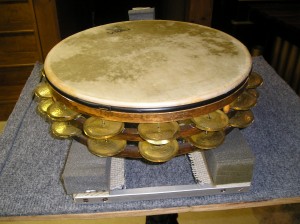
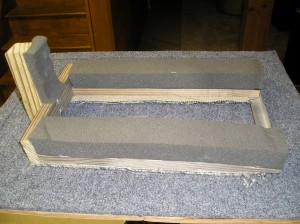
Trap Table
As a final example of problems that are endemic to playing percussion instruments, there is the issue of trap tables to support instruments and/or sticks and mallets. I have always constructed my own trap tables, though today they are available commercially. I tell students that if they make their own trap table they will likely end up using it more frequently than any of their instruments, so I made up a diagram which I give to students to help them if they want to make their own.
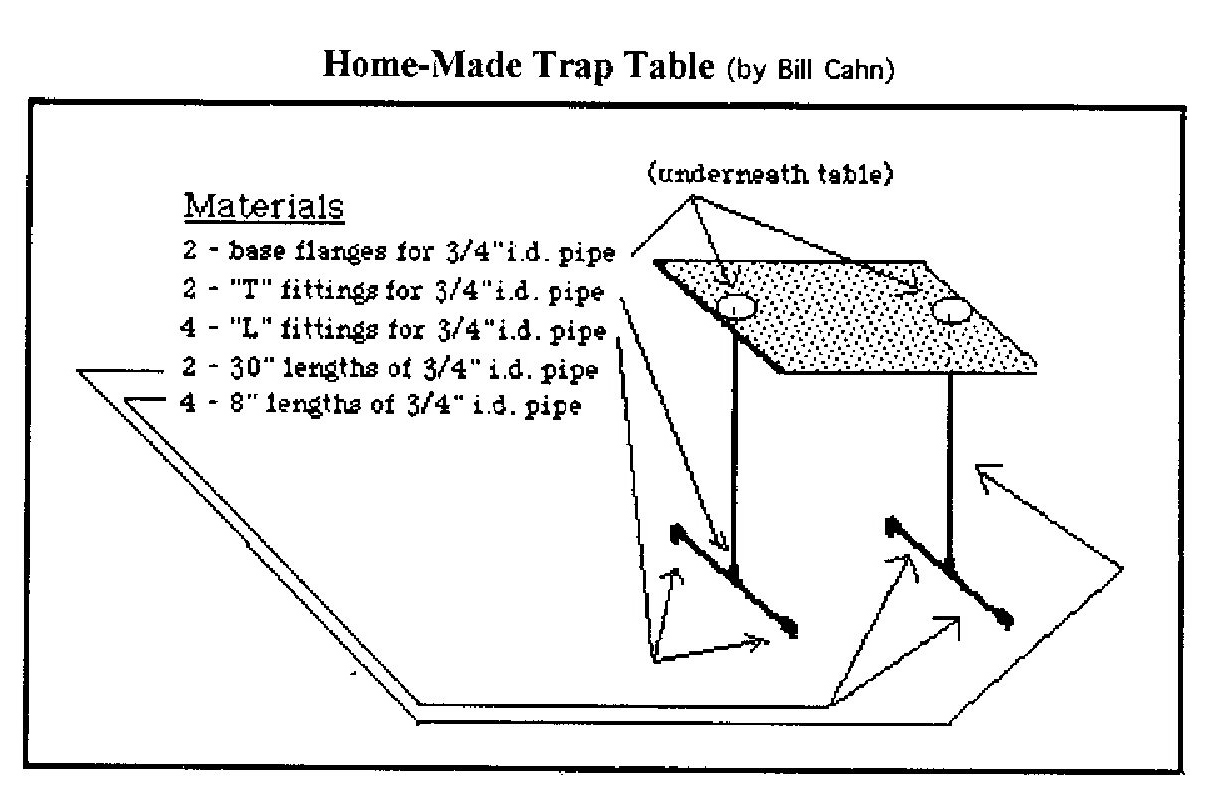
These are just a few of the many kinds of problem solving issues that I encountered when I was in the Rochester Philharmonic. After many years of dealing with such issues day-after-day, it would not be too difficult to write an entire book on the subject. I still find that, even with an ever growing list of commercial products available today to address some of these problems, it is frequently necessary to create my own solutions. More examples, focusing on the repertoire of NEXUS, will follow in another blog posting.

Greetings Bill. I’ve enjoyed reading your article. We all have to create instruments or devices from time to time. I am currently building 3 large wald-teufel for “Love Hurts – Carmen Remix” by Mike Svoboda. I’ve had small toy versions; but this piece calls for special “vocalizations” as well as plucking the string. All parts are fortissimo, hence the need for large instruments. Looking forward to more articles.
Hi again. I asked you last week about the metal castanet machine. What material did you use to attach the top finger cymbal to the wood post? And is that steel wool on the top? Why? One more question – have you ever had two different people play the part together? Is it difficult to line up? Thank you!
Very interesting. I appreciate all the information.
I’m curious about the tunable bass drum. When you tune it to a specific pitch, do you tune both heads to the same pitch?
Thanks,
Dave Hollinden